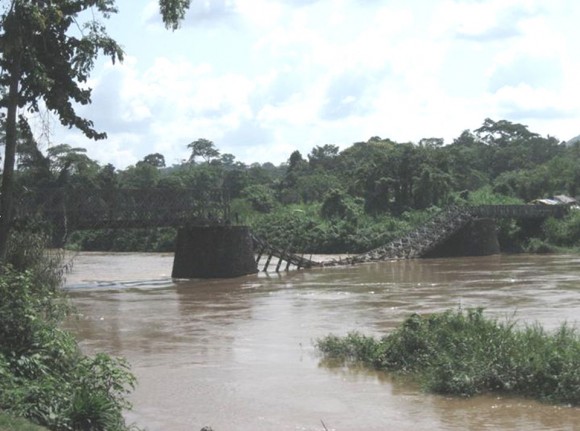
Well, also to get to the other side.
The challenges of building roads that spring to mind tend to be things like the topography of the area in which you’re trying to build, the density of the population, and the environmental and social challenges.
But in DR Congo, a country defined as much by its myriad waterways as by its size and forests, there’s an additional challenge to think about: getting across the rivers.
An average person living in DR Congo might well find that their nearest large town, market, health centre or primary school isn’t just down the road, but on the other side of the water.
That’s why our roads programmes here often need to include funding for bridges or ferries.
Last week I visited a ferry we had recently rehabilitated through our help to the Government of DR Congo’s national roads programme, which we support jointly with the World Bank.
On the nearest bank of this river to Kisangani, DR Congo’s third largest city, there is a town called Banalia. Even for Banalia, which doesn’t have the added challenge of crossing a river to get to Kisangani, the first four kilometres of the road could take five hours to navigate before we funded the re-opening of the road. So imagine if you lived in the town on the other side of the river, 650 metres away, and had to cross the water before your road journey even began.
A few hundred kilometres further east from Kisangani, but still in Orientale Province, we funded the rehabilitation of a bridge on Route Nationale 4. This road links Kisangani all the way to Uganda, and has been crucial in helping Kisangani to regenerate in the years since the war. But heavy traffic was struggling to use the road because of the state of the bridges.

Eighteen months on from the rehabilitation of the bridge, the impact – which we continue to measure over a period of two years to ensure our project has been sustainable and had the impact we aimed to achieve – has been remarkable.
Traffic counts either side of the bridge tell us that the volume of goods that can now be transported has increased almost five-fold and the actual number of lorries using the road to move goods has increased by a whopping 507%.
So crossing the rivers, as well as travelling the roads, will always be a key part of our work in the roads sector here in DR Congo.

1 comment
Comment by Rubin Neel posted on
IT IS GREAT EXPERIENCE TO WATCH WILF LIFE IN DR CONGO